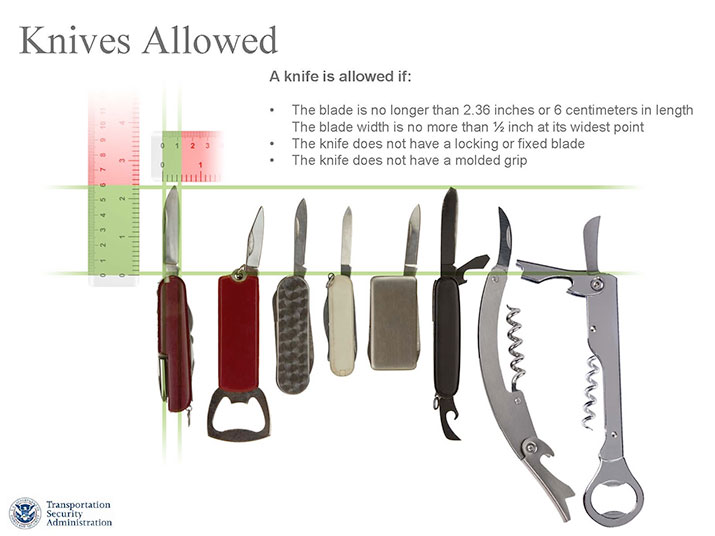
Passengers Will Be Able to Carry Small Knives on Planes
 For the first time since the 9/11 terrorist attacks, airline passengers will be allowed to have small knives and some previously prohibited sports equipment as carry-on items.
For the first time since the 9/11 terrorist attacks, airline passengers will be allowed to have small knives and some previously prohibited sports equipment as carry-on items.
The Transportation Security Administration decided that carry-on knives less than 2.36 inches long and less than one-half inch wide will be allowed. Larger knives and those with locking blades and molding handles will be prohibited. Razor blades and box cutters also will be restricted
Sports equipment, such as billiard cues, ski poles, hockey sticks, lacrosse sticks and two golf clubs will be allowed. Souvenir, novelty and toy baseball bats, such as whiffle-ball bats, also will be allowed.
The new rules take effect April 25, 2013.
TSA said the new regulations will allow its officers to better focus on “higher threat items such as explosives” as part of the agency’s overall, risk-based, security approach. The items presently allowed are “unlikely to result in catastrophic destruction of an aircraft,” TSA said.
TSA officials also believe removing these items from a list of prohibited items “will help align TSA’s list with international standards and help decrease the time spent rescreening or searching bags for these once prohibited items,” said TSA spokesperson, Nico Melendez.
Besides, TSA is more concerned about bombs and chemicals than knives, and TSA provided Security Today with the following video, to demonstrate what a bomb can do.